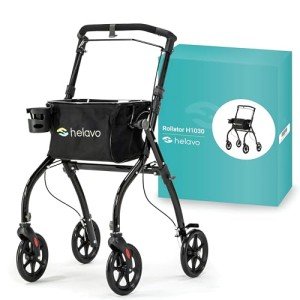9 Lessons Your Parents Teach You About Padded Seat Walker
페이지 정보

본문
The Comprehensive Guide to Padded Seat Walkers: Comfort and Mobility Combined
Mobility difficulties are a part of life for many people, whether due to age, injury, or various health conditions. As a solution, the padded seat walker has become a popular assistive device that not just help in mobility however likewise provides a resting option. This guide will explore the features and benefits of padded seat walkers, some factors to consider for choosing one, and much more.
What is a Padded Seat Walker?
A padded seat walker, likewise understood as a rolling walker or rollator, is a wheeled mobility aid geared up with a padded seat for resting. These devices usually have four wheels, handlebars, and a seat that allows users to navigate their environments securely while providing a spot to sit and recover when needed. The walker is especially advantageous for individuals who find themselves fatigued during extended walking or those who require extra support and stability.

Secret Features of Padded Seat Walkers
Here is a comprehensive list of key features to consider when choosing a padded seat All-Terrain Walker:
| Feature | Description |
|---|---|
| Padded Seat | Provides comfort throughout rest, typically with back support to ease sitting. |
| Wheels | Normally four wheels for stability and ease of movement, often with locking mechanisms. |
| Handles | Ergonomic and adjustable handles that accommodate different user heights. |
| Brakes | Easy-to-use brake systems that improve safety and control while walking or resting. |
| Storage Options | Frequently consists of a basket or pouch to carry individual products safely. |
| Lightweight Walker Frame | Created for ease of transport and handling, usually made from aluminum or steel. |
| Mobility | Some designs fold for easy storage and transport, suitable for travel. |
Advantages of Using a Padded Seat Walker
A padded seat walker can substantially enhance the quality of life for users. Here are numerous advantages:
Safety and Stability: A padded seat walker provides additional support, reducing the danger of falls and injuries.
Convenience: With a built-in seat, users can take breaks as needed without looking for a location to rest.
Improved Mobility: Walkers encourage motion and expedition, promoting independence and encouraging a much healthier lifestyle.
Comfort: Padded seats and ergonomic handles are developed to offer convenience during usage, reducing pressure on the body.
User-friendly: These walkers are frequently easy to use with minimal training, making them available for a broad series of users.
Selecting the Right Padded Seat Walker
When choosing a padded seat walker, think about the list below elements:
1. Size and Weight Capacity
It's necessary to choose a walker that accommodates the user's size and weight. Inspect the weight restricts specified by the maker and guarantee the Top Performance Walker supplies adequate stability.
2. Adjustability
Look for models with adjustable deals with to customize the walker height for comfort and safety. This function is especially crucial for users of varying heights.
3. Seat Height and Comfort
Ensure that the seat height is suitable for the user. A comfortable padded seat with back support will enhance the resting experience.
4. Wheel Type
Wheels can be found in numerous sizes and designs. Bigger wheels may carry out much better on irregular surfaces, while smaller wheels are simpler to maneuver inside.
5. Extra Features
Consider extras such as built-in storage, brake systems, and security features. Advanced designs might include devices like cup holders or backrests.
How to Use a Padded Seat Walker
For maximum benefit and security, users need to understand correct techniques:
Adjust the Walker: Set the walker to the appropriate height, ensuring that the user can conveniently grip the handlebars while standing straight.
Test Mobility: Before stepping forward, users must guarantee the brakes are disengaged and the walker is stable.
Keep Posture: Engage core muscles and maintain a straight posture while walking. The user must keep their weight centered over the walker.
Take Breaks: If feeling fatigued, the user can stop, engage the brakes, and sit on the padded seat to rest.
Shop Items Securely: Place personal belongings in the walker's storage compartment to prevent bring additional weight.
Regularly Asked Questions (FAQ)
Q1: Who can benefit from using a padded seat walker?
A1: Padded seat walkers are useful for elderly people, those recuperating from surgery, or anyone with mobility problems who needs support while walking.
Q2: How do I figure out which size walker to get?
A2: Consider the user's height and weight, and examine the walker specs for weight limitations and size recommendations.
Q3: What is the average lifespan of a padded seat walker?
A3: With appropriate care and upkeep, padded seat walkers can last numerous years, normally in between 5 to 10 years.
Q4: Can I utilize a padded seat walker outdoors?
A4: Yes, many padded seat walkers appropriate for outdoor usage, offered they have appropriate wheels designed for various surface areas.
Q5: How do I maintain a padded seat walker?
A5: Regularly inspect the brakes and wheels for wear, tidy the frame, and ensure that all parts are functioning correctly for safety.
Final Thoughts
Padded seat walkers represent a crucial resource in promoting independence and mobility for those facing physical obstacles. By using convenience, stability, and safety, they assist improve the lifestyle for users. If you or a loved one are considering a padded seat walker, this comprehensive guide ought to assist in making an informed option. Accepting mobility help can lead to a fulfilling and active way of life, showing that ease of movement is attainable at any age or condition.
- 이전글Five Killer Quora Answers To Window Installation Quotes 25.10.22
- 다음글Play m98 Online casino Online in Thailand 25.10.22
댓글목록
등록된 댓글이 없습니다.

